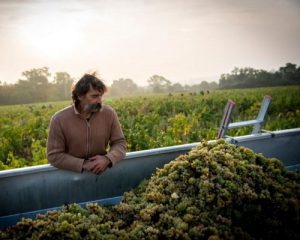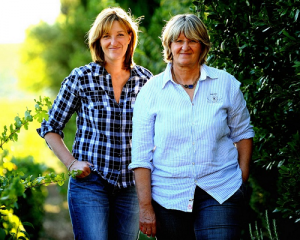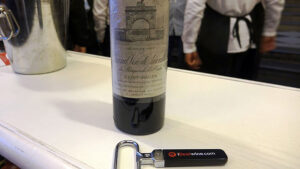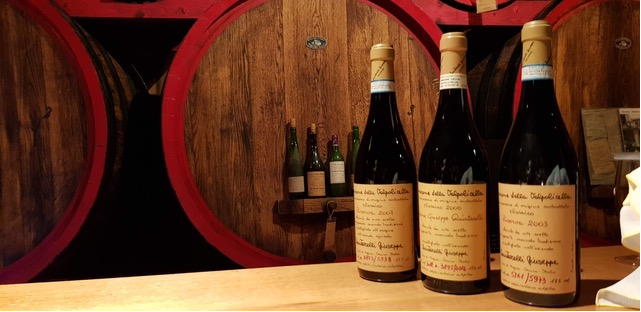
The father of Amarone and a masterful wine grower, Giuseppe Quintarelli has left an inestimable heritage to his family who now manage the estate. Excellence, tradition, artisanal spirit and authenticity define the monumental work carried out by this property where only the best vintages are produced. Extremely elegant, these wines are beautifully mellow with wonderful aromatic persistence.
Despite his modesty, Giuseppe Quintarelli is considered the father of Amarone and one of the greatest Italian winemakers. While he was a discrete man, his work let his work do the talking, which inspired a generation of winemakers such as Romano Dal Foro, who was Quintarelli’s loyal apprentice. In 2012, after 60 remarkable years of service in the world of wine, Quintarelli passed away. His estate, however, remains in the family and his daughter Fiorenza, his son-in-law Giampaolo and his grandchildren Francesco and Lorenzo carry the torch, producing wines that follow Quintarelli’s methods. The showpiece of this estate is most certainly the Amarone, considered the best example in the entire appellation and one of Italy’s finest exports. The 12-hectare property is located in the village of Negrar in the hills to the north of Vérone in the heart of Valpolicella at an altitude of around 500 metres.
Today, the name Quintarelli is synonymous with excellence, but also tradition, patience (the maturation process is long) and authenticity. This humble estate (there is no grand château to be seen here, just a family home and a cellar), produces Amaroni that are unrivalled. Bottle labels are a modest affair and marketing is quasi-inexistent which all contributes to the charm. Quintarelli was known for being quite a character and often scolded people who spit out his wine at tastings.
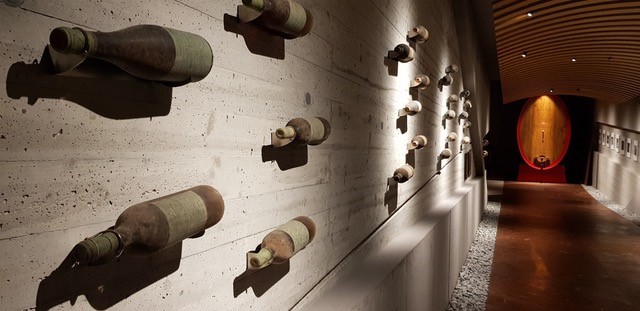
What is Amarone?
Amarone, meaning literally “The Great Bitter”, is made by using a traditional method called appassimento, which consists of drying the grapes for a few months until they have a raisin like appearance before pressing them. The result is a wine with a great concentration of flavour, sugar (which is in short supply and the reason why winemakers in the region use this method) and alcohol. Amarone sales took off in the 1980s and earned a Denominazione di Origine Controllata (DOC) in 1990. In 2009, Amarone and Recioto della Valpolicella (a sweet wine made in the same method) were promoted to DOCG status (Denominazione di Origine Controllata e Garantita). At Quintarelli, after appassimento, the grapes pressed and the juice vinified at a low temperature before ageing it in Slovenian oak for 8 years (10 years for Amarone Riserva). The resulting wines are elegant with an exceptional, long finish. In more unsuccessful vintages, the Quintarelli estate won’t produce an Amarone at all. Their wines have long set a benchmark in quality and look set to continue to do so, just as Giuseppe Quintarelli would have wished.
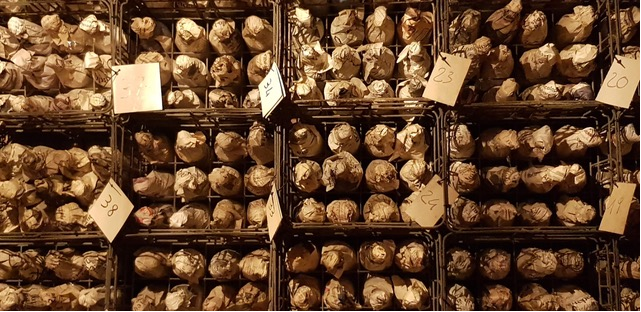
The story behind the legend
The story behind this estate begins in the early 1900s, when Silvio Quintarelli cultivated vines on a sharecropping basis in Figari (Marano di Valpolicella) with his brothers. After the First World War, Silvio moved to Negrar and, with the help of his wife and sons, founded his own vineyard in 1924. In 1950, the family business was passed down to Giuseppe, who worked tirelessly to improve the quality of the wines. He introduced new grape varieties such as Corvina, Nebbiolo, Croatina, Cabernet Franc, Cabernet Sauvignon, Sangiovese, Garganega, Trebbiano Toscano, Sauvignon Blanc, Chardonnay and Saorin.
In the final years, Giuseppe was joined in the vineyard by his daughter Fiorenza and her husband Giampolo Grigoli who began to lend a hand as his Parkinson’s disease worsened. After his death in 2012 at the age of 84, Fiorenza took the mantle. Today she runs the vineyard with her husband and two sons, Francesco and Lorenzo.
Yields are purposefully kept small through methods such as green harvesting so as to privilege quality not quantity and just a mere 60,000 bottles are produced per year. Harvest is carried out fairly late so that the grapes reach optimum ripeness and they undergo a rigorous selection process before being dried out in drying chambers for five months (when used for Amarone production).
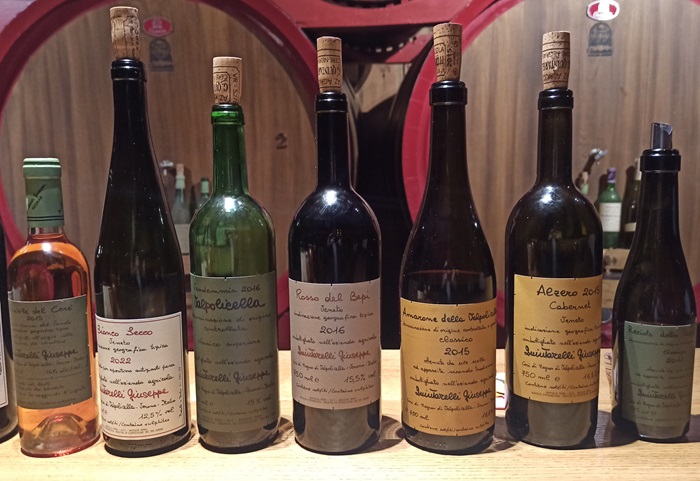
The wines
Amarone della Valpolicella Classico DOC (red):
- When the vintage is very good, the estate will produce this Amarone instead of the IGT Veneto Bepi.
- The 2015: A deep nose and a powerful and intense palate which still needs more time to be ready to be enjoyed. The finish is very long.
IGT Veneto Rosso Ca’Del Merlo (red):
- One of Italy’s finest wines, known for its elegance, richness and extreme complexity.
IGT Veneto Rosso del Bepi (red):
- Bepi, is the nickname of Giuseppe. This is the wine that he made when the vintage wasn’t good enough in his eyes to make an Amarone, Even today, the estate will still make this wine when it’s not an exceptional year.
- The 2016: A flavourful nose with notes of cacao mixing with bell pepper and slight animal aromas. The palate is complex and spiced.
Recioto della Valpolicella Classico DOCG (red):
- Valpolicella’s fortified wine can be described as an elixir when produced by the Quintarelli family.
- The 2011: A vegetal nose that leaves plenty of space for the silky palate full of dried fruits.
Valpolicella Classico Superiore (red):
- This wine is made from 50% fresh bunches and 50% bunches dried for two months. It’s matured for two years in old wooden barrels of various sizes.
- The 2016: A nose with bell pepper, vegetal and peppery notes. The palate is an explosion of power, freshness and complexity.
Veneto IGT Primofiore (red):
- A beautiful introduction to the estate’s wines. An expressive, fruity, floral and spiced wines with a structured, balanced palate.
Alzero Cabernet (red):
- A wine with Bordeaux influence from Italian soil.
- The 2015: A very noble nose which opens with bell pepper and black fruit notes. On the palate, the power is balanced by a wonderful acidity, silkiness and energy.
Amabile del Cerè IGT (sweet white):
- As a mythical figure of the Veneto wine region, Quintarelli crafted this local speciality thats rich and adapted to long ageing.
IGT Veneto Bianco Secco (dry white):
- An unusual blend of 5 white varieties which are Garganega, Chardonnay, Saorin, Trebbiano and Sauvignon Blanc.
- The 2022: Very aromatic on the palate, a mix of tropical and white fruits. It’s mouthwatering, spiced and quaffable.

